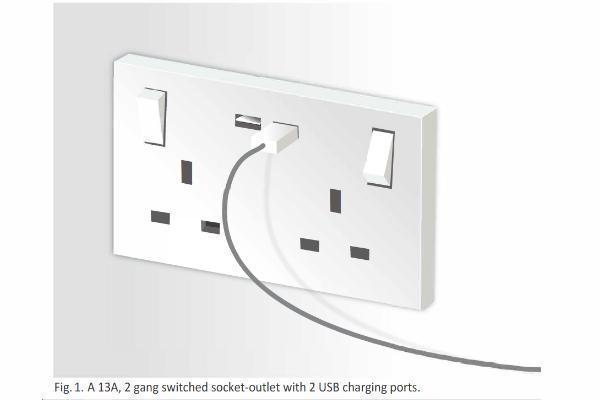
This article will provide guidance on the correct procedure when carrying out insulation resistance testing where USB socket-outlets have been fitted.
The increasingly common sight of 13A socket-outlets with USB* charger ports in domestic and other premises should come as no surprise given that, for many of us, charging up mobile phones and tablets is now part of our daily routine (Fig. 1). However, the presence of USB socket-outlets has given rise to some concerns about the effect of these accessories on test measurements when insulation resistance (IR) testing is carried out.
BS 1363-2:2016
Socket-outlets with integral USB charger ports came onto the market in 2013 as an alternative to plug-in chargers, a number of which were shown to have serious safety defects.
Self-contained USB charging modules are also available but socket-outlets with integral USB ports have proven especially popular since they can replace existing socket-outlets, thus removing the need for additional wiring.
Safety concerns have been raised about socket-outlets with integral USB charger ports. Previously, they were not covered by a single product standard but the introduction of BS 1363:2016 has changed that.
Socket-outlets with USB charger ports are now included in BS 1363-2:2016, Specification for 13A switched and unswitched socket-outlets.
The inclusion of these accessories in this standard brings them into line with BS 7671 which states that every socket-outlet for household and similar.
